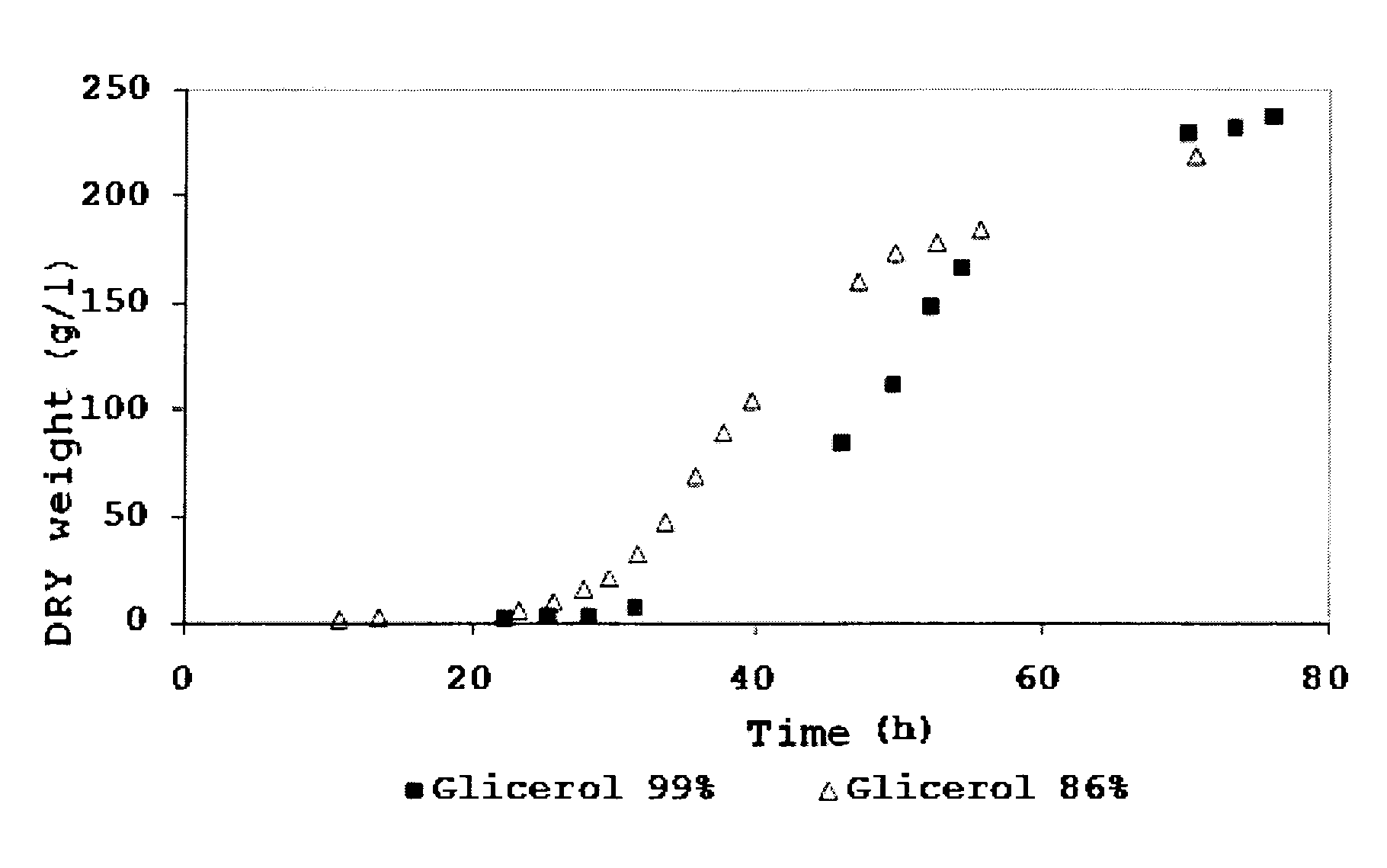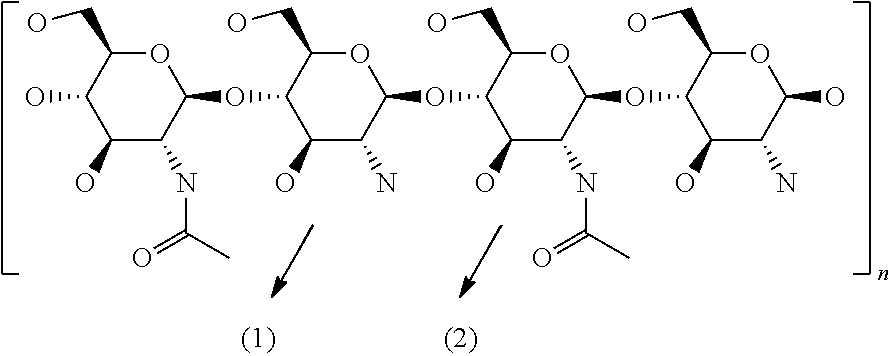Process for the co-production of chitin, its derivatives and polymers containing glucose, mannose and/or galactose, by the fermentation of the yeast Pichia pastoris
a technology of pichia pastoris and chitin, which is applied in the field of process for co-production of chitin, its derivatives and polymers containing glucose, mannose and/or galactose, by the fermentation of the yeast pichia pastoris, can solve the problems of high cost, low reproducibility, and high cost of the process, so as to reduce production costs and maximize the volumetric productivity of the process , the effect of low cos
- Summary
- Abstract
- Description
- Claims
- Application Information
AI Technical Summary
Benefits of technology
Problems solved by technology
Method used
Image
Examples
example 1
Pichia pastoris Fermentation in Glycerol
[0075]14.25 L of fermentation medium with the composition described in Table 1 was inoculated with 750 mL of a culture of Pichia pastoris DSMZ 70877. The fermentation was performed in a pilot scale bioreactor (LP351, 50 L, BioEngineering, Switzerland) with controlled temperature and pH (30° C. and 5.0, respectively). The air flow rate was kept at 30 L / min and the pressure was maintained at 0.10 bar, during the entire run. pH was controlled by the addition of ammonium hydroxide. The initial stirring rate was 300 rpm.
[0076]After 30 h of fermentation, the dissolved oxygen concentration (pO2) dropped to 50%. From that point on, it was controlled 20%, by increasing the stirring rate up to 1000 rpm. When the stirring rate reached 440 rpm, the bioreactor started to be fed with a solution containing glycerol (990 g / L) and 24 g / L of the mineral solution described in Table 1. The feeding rate was exponential and calculated according to the intended cell...
example 2
Chitin / Glucan Complex Production by Fermentation of Pichia pastoris in Glycerol Byproduct from the Biodiesel Industry
[0080]The protocol described in example 1 was used to grow Pichia pastoris DSMZ 70877. Pure glycerol was replaced by glycerol byproduct from the biodiesel industry, containing 86% glycerol. The feeding solution flow rates were corrected taking into account the new substrate composition. The evolution of the cell dry weight for both runs is presented in FIG. 1.
[0081]At the end of the fermentation, 224 g / L of biomass were obtained. The stationary growth phase was reached about 6 h earlier than in the fermentation with pure glycerol.
[0082]Using the extraction procedure proposed by Synowiecki et al. (2003), 0.352 g of chitin / glucan complex were obtained, which corresponds to 11.7% of P. pastoris biomass. Considering the cell density obtained at the end of the fermentation, polymer productivity was 8.99 kg / m3·day.
[0083]Using an enzymatic kit for glucan analysis (K-YBG, Meg...
PUM
| Property | Measurement | Unit |
|---|---|---|
| temperature | aaaaa | aaaaa |
| temperature | aaaaa | aaaaa |
| pH | aaaaa | aaaaa |
Abstract
Description
Claims
Application Information
 Login to View More
Login to View More - R&D
- Intellectual Property
- Life Sciences
- Materials
- Tech Scout
- Unparalleled Data Quality
- Higher Quality Content
- 60% Fewer Hallucinations
Browse by: Latest US Patents, China's latest patents, Technical Efficacy Thesaurus, Application Domain, Technology Topic, Popular Technical Reports.
© 2025 PatSnap. All rights reserved.Legal|Privacy policy|Modern Slavery Act Transparency Statement|Sitemap|About US| Contact US: help@patsnap.com


